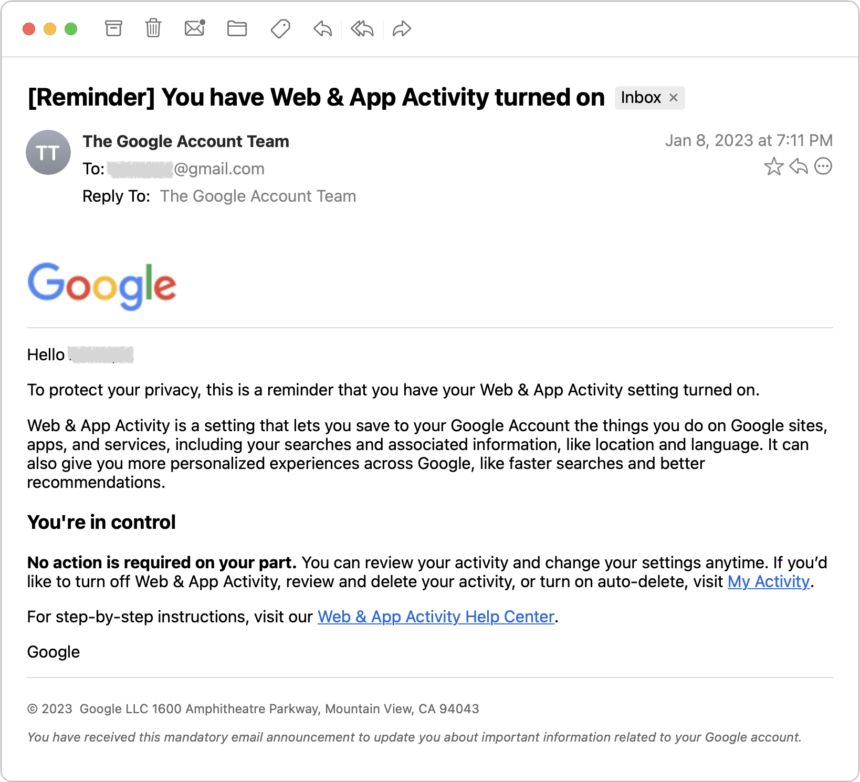Google, a tech giant synonymous with innovation, convenience, and global connectivity, finds itself at the center of a class action lawsuit that has sparked considerable debate. The case, known as Rodriguez v. Google LLC, highlights concerns surrounding user privacy, data collection practices, and Google’s alleged non-compliance with user consent.
This lawsuit underscores an essential question: Can corporations prioritize data collection over user consent while maintaining compliance with legal frameworks? Below, we delve into the intricate details of the lawsuit, its implications, and what it means for users worldwide.
The Origins of the Lawsuit
At the core of the lawsuit is Google’s Web and App Activity feature, which allows the company to track user activities across its ecosystem. Despite users opting out or pausing tracking, allegations arose that Google continued collecting and using data in violation of user consent.
The controversy began when individuals noticed discrepancies between their activity settings and the data Google was still able to collect. This led to the filing of a class action lawsuit, representing users who felt their privacy rights were ignored.
Key Issues Highlighted in the Case
The lawsuit raises critical concerns regarding data privacy and the alleged practices by Google:
- Ignoring User Consent:
- Plaintiffs claim Google collected Web and App Activity data even when users had opted out or paused the setting.
- This raises questions about the effectiveness of Google’s privacy controls and their compliance with user agreements.
- Data Usage Without Transparency:
- The lawsuit alleges that Google leveraged user data for commercial purposes without adequate disclosure or consent.
- Potential Antitrust Violations:
- Critics argue that Google’s practices exemplify monopolistic behavior, exploiting its ecosystem to prioritize data collection and profit.
The Email Notification Controversy
Adding another layer of complexity, Google sent court-ordered email notifications to eligible users, informing them of the lawsuit. Ironically, these emails were flagged as spam by Google’s own filtering systems. This sparked further outrage, as many users were unable to access the information or take action due to the automated deletion of spam emails.
How the Web and App Activity Feature Works
Google’s Web and App Activity setting tracks users’ interactions within its ecosystem, including:
- Search history on Google Search.
- App usage and interactions.
- Location data when using Google Maps.
- Browsing activity on Google Chrome.
While this feature ostensibly improves user experience by offering personalized recommendations and search results, critics argue it prioritizes Google’s commercial interests.
Alleged Violations and Legal Framework
The lawsuit highlights multiple alleged violations, including:
1. Breach of Privacy
- By ignoring user preferences, Google allegedly infringed upon privacy rights enshrined in laws such as the California Consumer Privacy Act (CCPA).
2. Deceptive Practices
- The lawsuit contends that Google misrepresented the effectiveness of its opt-out mechanisms.
3. Antitrust Violations
- By leveraging its dominant position to enforce data collection, Google’s actions are perceived as anti-competitive.
User Experiences: Evidence Presented
Several users reported:
- Receiving blank pages or incomplete search results after pausing Web and App Activity.
- Experiencing reduced functionality on platforms like YouTube unless they re-enabled the setting.
- Observing inconsistencies in how Google treated private browsing windows, raising concerns about data leakage.
Google’s Response
Google has denied the allegations, asserting:
- Compliance with Privacy Laws:
- The company claims to provide users with clear controls to manage their data.
- It emphasizes its commitment to transparency and user consent.
- Technical Limitations:
- Google argues that certain services require minimal data collection to function correctly.
The Broader Implications
For Users
- Increased Awareness:
- The case highlights the importance of understanding privacy settings and monitoring data usage.
- Potential Compensation:
- If the plaintiffs prevail, users affected by Google’s practices may be entitled to monetary compensation.
For Google and Other Tech Companies
- Stricter Regulations:
- The lawsuit could lead to heightened scrutiny of data collection practices and stricter enforcement of privacy laws.
- Precedent Setting:
- A ruling against Google might encourage similar lawsuits against other tech companies.
How to Check Your Eligibility
To determine if you are part of the class action lawsuit:
- Search Your Email:
- Look for a notification titled “Google Web App Activity Class Action.”
- Check your spam or junk folder if you don’t see it in your inbox.
- Verify Your Settings:
- Access your Google account settings and review your Web and App Activity preferences.
- Visit the Official Website:
- Follow the link provided in the email or search for the lawsuit online to find official updates.
Steps Users Can Take to Protect Their Data
- Audit Privacy Settings:
- Regularly review and update your privacy preferences on Google and other platforms.
- Use Alternative Tools:
- Consider using non-Google browsers and search engines for greater privacy.
- Stay Informed:
- Follow updates on the lawsuit and understand your rights as a user.
The Google Web App Activity lawsuit serves as a wake-up call for both corporations and consumers. It underscores the need for transparency, accountability, and respect for user privacy in the digital age. Whether or not Google is found liable, the case emphasizes the importance of informed decision-making and robust privacy protections in an increasingly interconnected world.







